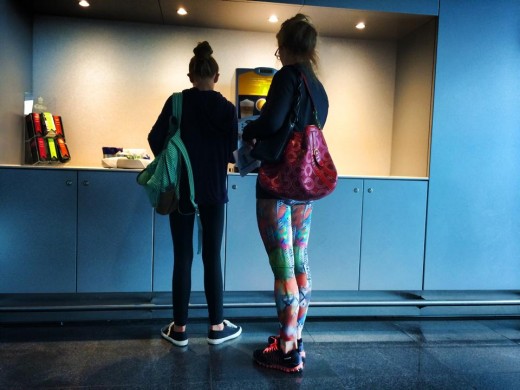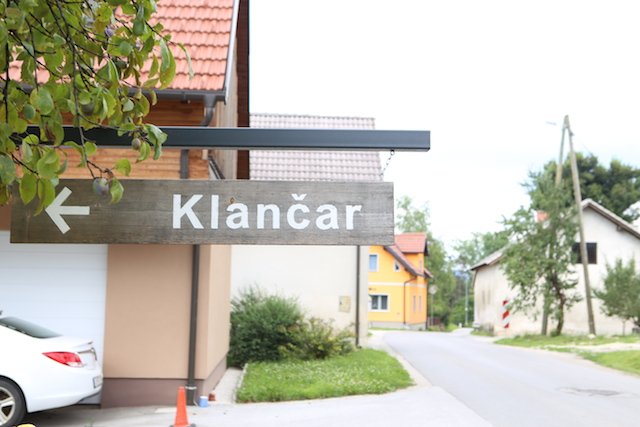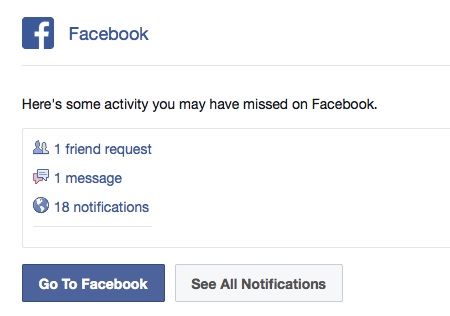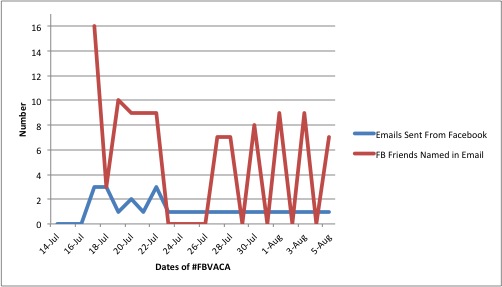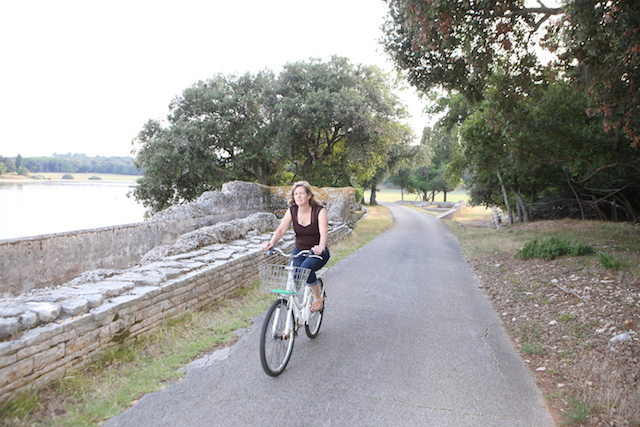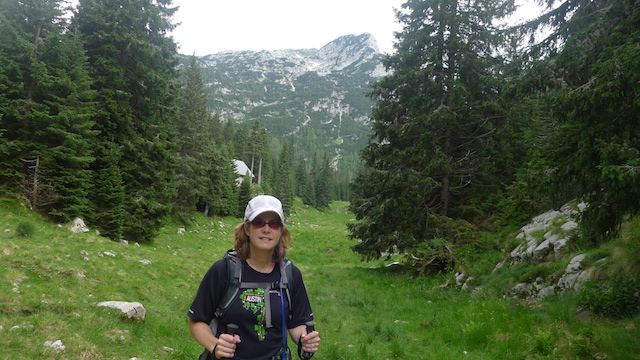social media
My Facebook Vacation #FBVACA
Recently I went on a long-awaited two-week vacation to Europe to visit my husband’s ancestral homeland of Slovenia as well as Croatia’s Istrian peninsula. During this vacation, I vowed to take a “Facebook” vacation as well. I’m a pretty regular contributor to Facebook for my close family and friends and generally scan updates at least once a day if not a couple times as “break time.” A couple reasons drove my desire for a #FBVACA. I recently started to feel that FB might be wasting my time. I also teach a course for university freshman in which they analyze their own media use across a few days’ time and compare it to national trends. I am considering having them take a one-day hiatus from social media, to reflect, and write about the experience. I thought my own Facebook hiatus would be an excellent way for me to explore what this type of assignment might do for them before asking them to do it. Finally, I really wanted to experience – to be present – during this vacation. It probably was going to cost more than any other vacation I’ve ever taken – and I didn’t want to waste the investment by spending my time reading Facebook, which I could do at home. As I told a friend before I left, if I feel lured to look at Facebook, it means I need to go to a café and have a glass of wine or go meet some locals and chat.
It’s Hard to Say Goodbye
On July 14th, as we waited to board our first plane, I posted my “goodbye” post.
Vowing to not look at FB is very different than not thinking about FB. On the first flight through conversation with my husband, Lee, I realized a party we planned and sent invitations through FB was scheduled on a day that Lee would be out of town for business. I was simultaneously flustered (I already posted my goodbye post!) and excited (oh, I get to see what people are posting in response to my goodbye post!) that I’d have to return to FB one more time to change the party date. Then I felt relief when Lee indicated he could change the details since he was a co-host. I wouldn’t have to log-in after all. As we sat in a wine bar in Newark airport, I sipped a glass and after Lee finished his work, we discussed his father’s decision to sell his grandmother’s house.
The compunction to check FB launched as we waited at the gate for the Frankfurt flight. Instead, I read the news and then simply waited and people-watched. Then, the desire renewed again, as we sat for three hours on the Newark tarmac waiting for bad weather to pass so our flight could take off. “Why did I think it was worthy to post about being delayed for 3 hours?” I wrote in my journal. Even if I had succumbed to my desire, my phone was in the overhead bin. Yet, Lee had his phone, which I borrowed once to look at our flight status. “I could look at your Facebook,” I told my husband. He said, “You could.” I didn’t.
The delay in Newark caused a missed flight and subsequently another 6 hours of waiting in Frankfurt, during which we decided to walk the airport. After several laps, we spied a free hot drink (coffee, tea, hot chocolate) machine provided by Lufthansa. While drinking the first of many free hot drinks, Lee realized there was free Wi-Fi. I noticed he was crafting a FB post depicting a photo array of free coffee machine patrons. I felt excited. It was a creative post; we could share our boring situation; it was killing time. Lee suggested I photobomb it, so I jumped into a few frames. I didn’t technically log into my FB account, but it seems I was directly contributing to a creative contribution.
Once finally in Ljubljana, Slovenia I noticed I (and Lee) was still interpreting experiences through a Facebook lens, such as:
Upon seeing the lovely suite Hotel Cubo upgraded us into, I exclaimed, “THIS is post-worthy!” But then retorted, “Well, you [Lee] can post it.” 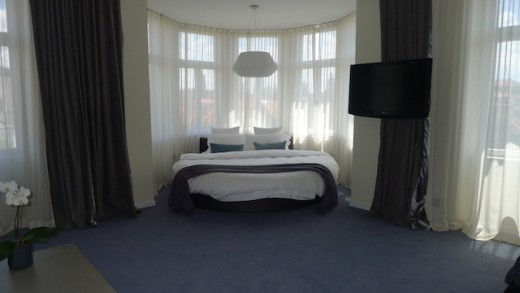
The Apple store is named “EPL” which I pointed out as we walked by, and Lee said he wanted to post a picture and see if people could figure out what it was. 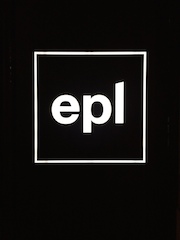
On our way to dinner, in a quaint square, several musicians were playing polka music and some couples were dancing. We took a picture, but I thought how a video post on Facebook would be cool. 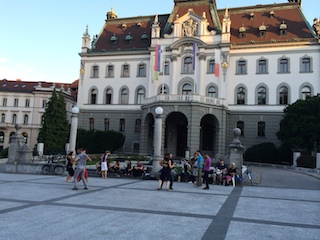
After a midday break in our hotel while Lee was skype-working, I felt the lure of FB as I checked email on my phone. I had carried the phone around with me all morning – it was the middle of the night in the U.S. Why would anyone call me? I decided to stop carrying it around with me and started to check for texts at the beginning and end of each day.
At dinner, Lee asked for the bill and pronounced the Slovene word “račun” as “raccoon.” The waiter told Lee he probably didn’t want that as it is an animal (it should be pronounced “rachoon”). Lee, turning to me, immediately said he was writing a FB post about the language incident in his head [he never posted it, as far as I know….]
At the same time, we noticed a definite lack of mobile device use during dining. I wrote in my journal, “I see four tables or so, all filled with people dining. Not a phone in sight. People appear to be talking and eating.”
Discovering the Facebook of the Past
While I was trying to not engage with Facebook to be more present in my vacation, two experiences we had trying to find genealogical information on Lee’s great-grandfather, Frank Klancher, actually led us to see how the social purposes underlying FB have functioned for centuries just through different media and transport – an argument Tom Standage recently described in his book, Writing on the Wall: Social Media – The First 2,000 Years. We visited the Slovenian National Library to inquire of possible archival information that might helps us find more information on Frank Klancher. The extraordinarily gracious librarian revealed that this library was not the right place – that we should try the National Archive (which also wasn’t right – we had to go to the Archbishop’s archive), but he sat down with us to show us the Digital Library of Slovenia which is available anywhere there’s Internet. He did a quick search for Franz (Frank is not a Slovenian name) Klan* (since we were unsure of spelling) and ended up finding a Slovenian newspaper published in New York with the news of Slovenian workers in the U.S. In one entry, the librarian translated that it said Franz Klancher cut himself with a knife. In the same set of entries, the librarian told us it reported someone’s foot was crushed when wood fell on it, and a dog bit a 10-year old. It sure sounded like the Facebook of the 1900s. I imagined the families getting this newspaper and eagerly reading of news of their acquaintances and relatives.
Later, we headed to the town of Ig where Lee’s aunt had found the “Klančar farm.” There was hope that the farm might be owned by Klancher relatives. Unfortunately, we soon discovered the farm was bought in 1906 by the current family’s ancestors from a Klančar couple “who had no kids.” The current matriarch of this family, in a longer conversation about her life, described how her husband worked most of their life in Germany and she’d send letters to him and wait … for like 3 months. She continued and explained how now you wait 3 minutes and even that’s unacceptable.
Joan, You have notifications pending…
It was on this day of visiting Ig and then heading to Croatia – 3 days after I wrote my goodbye status update – when FB emails started rolling in (see chart) and never stopped. FB tried to entice me by noting I was missing friend requests, messages, and updates. In most of these updates, they would mention specific friends who were posting pictures and popular stories.
The first email mentioned the most (16) friends’ names. Then they varied – either mentioning none (as in the graphic) or about 8 or 9 people. Across all the days and emails, they mentioned 40 unique friends (of 365 total), but more often they mentioned some people several times. The most-mentioned friends were:
- Kristen, my sister-in-law’s sister (17 times)
- Rachel, a former advisee / Ph.D. graduate / also our dogsitter during this vacation (13 times)
- Leslie, my sister-in-law (5 times)
- Colleen, my cousin (4 times)
- Rosemarie, my sister (4 times)
- Sharon, my cousin (3 times)
- Loukia, my friend (3 times)
- Teresa, a current Ph.D. student (3 times)
Eleven other friends were mentioned twice, and the rest only once. I noticed these notifications in my personal email, but unfortunately for FB, the notices did not persuade me to log in.
The fourth day is the charm
I felt a cerebral disconnection from FB beginning from the fourth day onwards. It might have also coincided with poor Internet in a Croatian hotel that prevented me from checking my email or doing any vacation research online. But in my journal notes, there are no more mentions of feeling the need to post or share experiences (not even the nude campground in Croatia we saw from a bike trail). My journal, instead, focuses on the activities we did and food we ate.
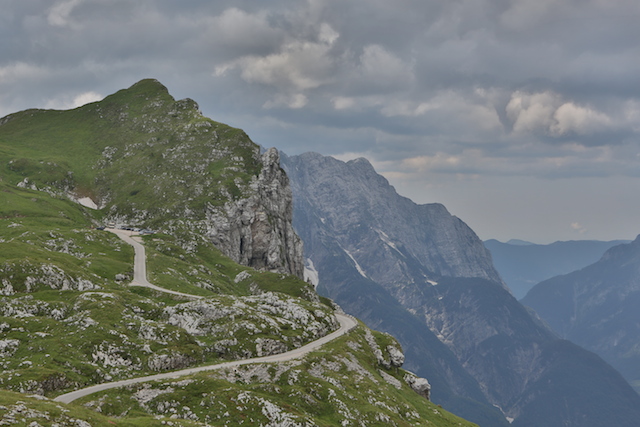
Driving the highest road in Slovenia to the base of Mangrt Peak with views of Austria (and a step into) Italy

Enjoying leisurely (always 2 hrs+) 4-course meals accompanied by Slovenian wine at Hotel Dobra Vila in Bovec, Slovenia (at which I never once saw a digital device in anyone’s hands). This dessert, Lee’s favorite, was tonka bean ice cream in a meringue bowl with apricot slices – everything lovingly decorated with edible flowers and herbs. I learned about the tonka bean, used as an alternative to the vanilla bean, but banned by the USDA.
Commitments
During this #FBVACA my husband and I talked about our observations and reflections concerning Facebook and all things digital – mostly during our long dinners together. Things were proposed, such as:
- No digital devices in our bedroom (with the excepted use for reading books)
- No phones when we go out to dinner together
- Removing Facebook apps from our phones
- Not needing to carry a phone with us everywhere (we felt so light and free)
The Return
As our plane landed in Houston on July 28th, the flight attendant announced “electronic devices could now be turned on.” My phone was packed away in a backpack in the overhead bin, but I glanced down my row and several aisles and everyone had their phones out, turned on, heads focused on their screens. Lee and I looked at each other and laughed.
For another eight days after returning home, I never logged on to Facebook, mostly because I wanted to write this essay before doing so. At one point during the week, Lee mentioned a post his mom had made. I realized I was missing some news. I also realized I felt somewhat lonely in that I went to work (a rather solo endeavor for me) to return to my husband and dogs. I suppose I missed hearing about interesting news from my friends.
It may seem strange that a professor of learning technologies who teaches about digital technology and education would orchestrate such an experience. I think it’s important to explore our life in more detail in order to examine decisions we make on a daily basis. I describe myself as a critical consumer of digital technology – a perspective I try to teach as well. I don’t want to accept technologies at face value. My #FBVACA enabled me to see how much I see the world through the filter of Facebook posts and also see that FB does serve a social connective role for me with my friends and family.
Presentation at SITE Conference: On preservice teachers’ social networking
UPDATE 3/23/14: The audio of the presentation is enclosed below, above the slideshow.
There were two questions at the end of the presentation that may be difficult to hear:
- Could the data regarding preservice teachers’ restrictions on social networking be on themselves or on their students that they are interning with?
- Could the potential use of social networking in the program by faculty have impacted these preservice teachers’ use in their courses and for educational purposes?
In regards to the first question, the preservice teachers were definitely answering in regards to restrictions on their own use of social networking. The survey did not ask them about use of technologies with the students they worked with in the PK-12 fields. We definitely think that what happens with technology by faculty impacts what preservice teachers do with technologies. As Sa Liu noted, we did ask the preservice teachers about their perceptions of faculty use but we have not yet analyzed that data formally though it is low for social networking from our informal observations of the data.
Sa Liu (@liusashmily) is representing our team at the annual SITE conference where she’s presenting our new research paper that examines preservice teachers’ social networking use, concerns, and educational possibilities. This paper reflects four years of data from one preservice teacher education program.
She presents for us on March 18, 2014. I will be updating this post with the audio recording after she presents, which may assist in the interpretation of the slides.
AUDIO PRESENTATION:

